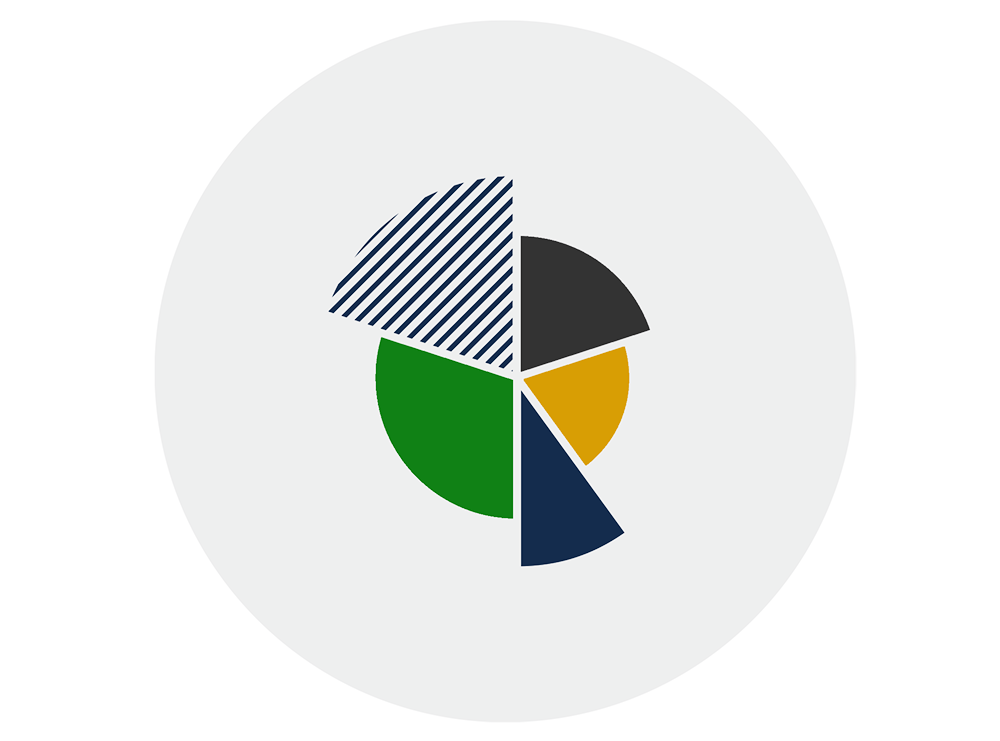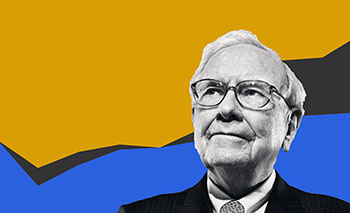It's all about diversification
While there is no such thing as a free lunch, risk reduction through diversification is as close as it gets.
Diversification is about buying a basket of securities that tend to do well (or poorly) at different times and under different economic conditions. Being thoughtful about how much capital to allocate to each of these securities can result in far more consistent returns than concentrating all capital (and risk) in a single security or asset class. These portfolios are diversified across multiple asset classes, including stocks, bonds, and inflation-hedging securities like Real Estate Investment Trusts. The capital allocation to each of these asset classes is dialed up or down depending on the desired risk level. When these asset classes are combined together intelligently in a portfolio they can provide income, growth, and stability during different economic conditions.
Traditionally, it is well accepted in the industry that:
- Stocks do well in periods of growth;
- Bonds provide stability and income during periods of market downturns; and
- Real Estate and Inflation-Protection Bonds do well during inflationary periods.

Our Allocation
A Nobel Prize Winning Approach
Our portfolios allocate capital to an equity component, a bond component and an inflation-hedging component. Together these deliver good diversification, which leads to risk reduction and return stability.
The capital allocation to each of these asset classes is dialed up or down depending on the targeted risk level. Clients fill out a risk questionnaire, and receive a recommended portfolio based on their responses to that risk.

Armis Financial's approach to portfolio construction is influenced by the work of Nobel Prize laureates William Sharpe and Harry Markowitz, who shaped the role of financial science in investing through their development of Modern Portfolio Theory. This theory states that a portfolio diversified across asset classes offers the best opportunity for an investor to achieve the highest possible return for a given level of risk. It suggests that your portfolio should be diversified with REITs, international equities, emerging market equities, US equities, and fixed income. Our portfolios own around 12,000 stocks in over 40 countries as well as bonds that are selected based upon each customer's unique situation.
Passive Investing

What is passive investing? We first must define active investing. Active investing is paying someone to pick investments for you—such as stocks, bonds, or any other kind of investment. It involves paying not only this person and his or her team — in this case a mutual fund manager — to pick these investments, but paying for lots of expensive trading when the manager decides to buy and sell things. The perception behind active investing is that these people are smarter than the market as a whole, and that will make it worth the extra cost for paying the manager and the extra trading. Although this might sound great at first, mutual fund managers are bound by regulatory laws and job complacency incentives to not always go with their best ideas. Learn more to find out what I mean by that.
Passive investing is different (in a good way). Passive investing runs on the principle that individuals are actually very bad at picking winners when it comes to stocks, bonds or other investments (which an abundant amount of research proves), passive investments track entire swathes of different markets. Whether those swathes happen to be all the companies that make up the S&P 500 —or stocks from one part of the world, certain types of bonds, real estate, or what have you. Instead of trying to pick winners, you diversify. The costs of diversifying in passive investments are a fraction of the costs of active investments (Mutual Funds).

Warren Buffet, arguably the most successful investor in the world, made a bet about a decade ago that a passive S&P 500 index fund would outperform a hedge fund. He won handily. he final results were a 7.1% annualized gain for the S&P 500 index fund (about 99% overall return) versus just 2.2% annualized (about 24% total) for the basket of funds Ted Seides (the hedge fund manager whom he made a bet against) had selected. Although Buffet has made an enormous fortune and built a reputation for picking winning investments, why did Warren Buffet bet on Passive Investing? And why is he willing to bet on it again?
First and foremost, selling out of all your stocks and buying passive index investments is not what Buffet is suggesting. He has nothing against stock picking if you have knowledge, desire, time and discipline. However, most individuals don’t, which for that very reason makes passive index investing the best investment for most individuals. Buffet has a problem with actively managed funds (Hedge and Mutual funds), due to their high fees. Some fund managers will beat the market some years and some will lose. And since they all charge higher fees, investors are at an inherent disadvantage, particularly over investors with a long-time horizon.
Mutual Funds
And what you should know about them
4 Questions to ask yourself:
- Do you own any Mutual Funds in your 401k, IRA, 403b, brokerage account, etc.?
- Are your Mutual Funds underperforming or overperforming?
- Do you understand the fees associated with Mutual Funds?
- Where can I learn more about the fees in my Mutual Funds?
For the longest time, Mutual Funds have been touted to be one the best investments for individual investors. That is why most portfolios, whether its in a 401k, 403b, IRA, etc., are investment in Mutual Funds. But are they really the best solution for the individual investor?
You may believe you are holding the top rated Mutual Funds by Morningstar but in reality, 88% of those 5-star funds were underperformers in the long-run. Link to resource.
3 Types Of Fees Behind Mutual Funds
Ongoing Basis -
These are the type of fees that Mutual Funds might charge on an ongoing basis:
- Management fees - These are the fees you pay to the manager/managers of the fund.
- 12b-1 fees - These fees, capped at 1% of your assets in the fund annually, are taken out of the fund's assets to pay for the cost of marketing and selling the fund, for some shareholder services, and sometimes to pay employee bonuses.
- Other Expenses - This miscellaneous category includes the costs of providing services to shareholders outside of the expenses covered by 12b-1 fees or portfolio management fees. You also pay transaction fees for the trades the fund makes, though this amount is not reported separately as the other fees are.
Specific Action -
These are the type of fees that Mutual Funds might charge based on a an action:
- Account fees - Funds may charge you a separate fee to maintain your account, especially if your investment falls below a set dollar amount.
- Redemption fees - To discourage very short-term trading, funds often charge a redemption fee to investors who sell shares shortly after buying them. Redemption fees may be charged anywhere from a few days to over a year.
- Exchange fees - Some funds also charge exchange fees for moving your money from one fund to another fund offered by the same investment company.
- Purchase fees - Whether or not a fund charges a front-end sales charge, it may assess a purchase fee at the time you buy shares of the fund.
Sneaky Behaviour -
These are the hidden costs that are undisclosed. To get an even better understanding, I recommend reading “Mutual Funds Exposed”, by Dr. Kenneth Kim and William Nelson.
Excessive Risk-Taking Near Quarter-End
Favortism Towards Institutional Clients
Finra Fund Analyzer
Click on the Firna button below if you want an easy-tp-use online tool that allows you to compare expenses among funds -- or among different share classes of the same fund. Using a data feed that captures expense information for thousands of funds, the analyzer can help you understand the impact fees have on your investment over time. Once you select up to three funds, type in the amount you plan to invest and how long you plan to keep the fund, the analyzer does the rest.
